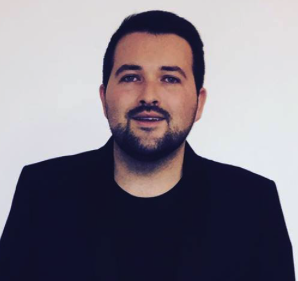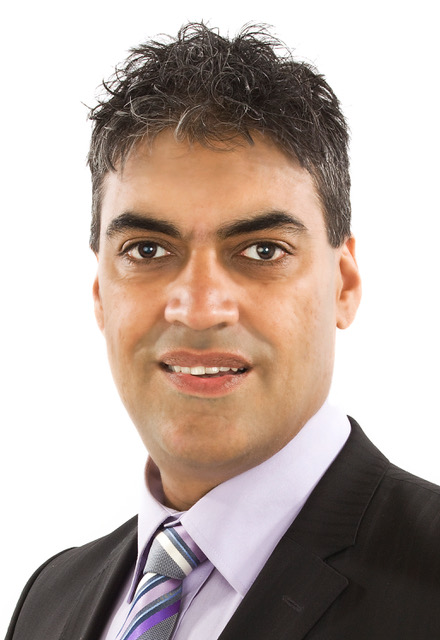Founding Partner at ‘The Juggling Act’ Lucy Fry, suggests how to make the transition work, in six steps.
I’ve never met a working woman whose attitude and response to work is unchanged by becoming a mother. It’s not just the long period of time away from the work itself –we know that this commonly has a negative impact on a working woman’s confidence, for starters – but also the inevitable lifestyle and priority changes, all of which make it impossible to be the same employee, regardless of the job requirements.
Perhaps we shouldn’t go back to work at all. Instead, we should go forward to work. After all, becoming a parent is one of the most transformational processes a human being can go through, and because we aren’t robots (thank goodness) it will affect who we are as employees.
Here are 6 suggestions to help yourself go forward to work after having a baby.
- PLAN (NOW) AND GET SUPPORT
It’s never too early to start thinking about how you’d like your post-baby working life to look. In my coaching programme welcome working women from all stages of the parenting journey, from those simply considering getting pregnant, to those who have already returned to work after having a baby, and are struggling to stay afloat. The first question we ask is always what support is available to you?
Juggling priorities amidst the circus of raising a family is not easy but it is more manageable with a proper support network and yet it won’t just magically appear! Planning which roles different people will play and telling them about it too, is a vital part of preparing the ground for when you go back into the office / to work, and this includes your colleagues and your boss (see tips below on dialogues with employers).
Think explicitly about who’s going to be called on to offer a shoulder – or some extra childcare so you can sleep – when you need it? Who will you email to tell you’re falling into old patterns of withdrawal or negative thought processes and/or overwhelm? Talk to your partner or co-parent about how you are going to make your juggling act work together and be specific because abstract ideas don’t lead to change. What time each of you will go into work? Can this vary depending on the day? Will you work from home sometimes, share nursery pick-ups and household tasks? How will you warn each other that you aren’t doing so well? How will you celebrate the times you manage brilliantly?
- OPEN UP A DIALOGUE WITH EMPLOYERS, EARLY!
Find out what your employers are expecting of you when you come back, while you’re on leave if possible. This applies just as much if you’re self-employed too – even more so, in many ways, since it’s easy to put off planning if you know you’re the Boss, but really it’s still a good idea. Think ahead about what’s required, whether it’s fair, clashes with your values or boundaries (see below) and whether you can deliver (and if you can’t, start talking to an employer about it – see below). Ask (or think) in advance about whether it’s possible for you to go back in to work, to sit in on a few meetings whilst you’re still on leave, so that you can get over initial worries and be kept in the loop (it also looks like you’re taking initiative and are coming back with commitment). If you have an HR department, talk to them before you go back, find out whether there are any opportunities your company has for new mums or if there’s any funding for coaching as many do but don’t advertise that fact.
- UNCOVER YOUR VALUES & BUILD ON YOUR BOUNDARIES.
Do you know which values are most important to you? Take the free 5 minute Barrett Values test here to get a better idea. “Values can help define boundaries,” says Juggling Act Founder and Executive Coach Claire Fry: “Knowing your boundaries is very important in making any life changes, such as thinking about how you’re going to return to work after having a baby.” This can feel difficult and may even masquerade as selfishness, but really it’s about holding your own in a world full of competing priorities.
As the researcher, author and public speaker Brene Brown writes in her book, Daring Greatly: “Daring to set boundaries is about having the courage to love ourselves, even when we risk disappointing others.” What can this look like in terms of working-and-parenting? Turning emails off or not answering calls on certain days or after certain times, for example, and telling people that you’ll do that and then doing it, consistently. Or, if you’re certain that you can only commit to working four days a week, stay true to that and don’t check emails or be on call during that fifth non-work day. Think about your boundaries, talk to your support network about them, and write them down in readiness to ask for what you want in a meeting or phonecall.
- ASK FOR WHAT YOU WANT (AND FOR SPECIFIC FEEDBACK).
This is huge for women in work. Huge! Examine why you might not be asking for what you want – whether a promotion, better pay, better working hours or more holiday. So many women hold back just because there are afraid to get the answer no. Very often though, employers simply want to hear what you need and how you’re going to make it work for everyone, so approaching them with a plan is key.
When it comes to pushing for what you want, it’s important to know how you’re doing (and potentially use that as bargaining power)! Yet research shows that women tend to receive more vague feedback than men, and rarely challenge it or ask for more clarity. This makes it hard for them to ascertain where they are striving and what they could do better; to ask for guidance where it’s needed.
“When giving others feedback you should always focus on being clear and talk about the impact (positive or negative) of specific situations or behaviours. For example, this might sound like: “When you interrupted me during the question about fees in that meeting, I felt undermined and it was hard to regain my focus”. Sometimes simple things like ‘can you say more?’ or ‘what aspect exactly was it you weren’t happy with’ can help others feel heard whilst giving you more time and space to understand what’s being said.
- NEGOTIATE BETTER
Now you know what you want and you know why you deserve it, it’s time to negotiate. But first, you have to regard every conversation as a negotiation, rather than a done-deal, and be prepared to get a little bit uncomfortable. (As Tim Ferris, entrepreneur and author of The Four Hour Work Week says: “A person’s success in life can usually be measured by then number of uncomfortable conversations she is willing to have.”)
“One important thing is to focus on talking about your role and objectives against it, rather than bum-in-seat time,” says Coach, Claire: “This will free up your thinking, as well as your employer’s, about how to structure and support your return and transition back to work.”
During these negotiations remember that simple techniques like saying “that’s something I need to think about – I’ll get back to you tomorrow” can offer crucial thinking time / prevent you from being pressured into making unwanted decisions during pressured conversations.
Claire advises: “In the case of parental leave, return, transition and flexible working: start by writing down what it is you ideally want and then what you would be willing to compromise on in order to make the big picture work for you, your family and your employer. There is a win-win in there somewhere and it’s worth taking the time to find it.”
- BEWARE THE DRAMA TRIANGLE
Ever find yourself feeling disempowered by a colleague or employer? Or maybe you feel constantly guilty, and/or compelled to jump in and make everything all right for someone else, putting your own needs last? Social interaction model, The Drama Triangle (Stephen Karpman, 1968), is helpful in improving constructive communication and enabling you to step out of destructive power dynamics. Karpman suggests there are three points we inhabit when we’re in a destructive dynamic, those of victim, persecutor or rescuer. Often we move through different positions with different people / at different times. The victim looks at what they don’t want, and how it’s not their fault. The persecutor criticise and blame the victim, and the rescuer needs to caretake others in order to feel worthy. The alternative is to move into The Empowerment Dynamic (or TED) and to shift out of victim into creator – someone who focuses on what they do want.
WHAT IS THE JUGGLING ACT?
We are a consulting agency that works with organisations on how they can better support their working parent employees through, coaching, workshops, cultural assessments and transformation.
As part of this offer, we also run The Juggling Act leadership programme: an innovative coaching programme that enables parents to build the career they truly want amidst the circus of raising a family.
Our Learning & Development programme is a 4-part combination of coaching sessions and a full-day workshop, designed to empower parents re-entering the workplace, enhancing their focus and self-assurance as well as offering real-life practical exercises in negotiation and communication skills.







 Bringing all the profession together, the British Dental Conference and Dentistry Show 2019 will provide the perfect platform for learning, networking and discovery. For dental hygienists and dental therapists, there will be an extensive trade exhibition with dental suppliers on hand to demonstrate their latest and greatest materials, technologies and oral health products. There will also be a dedicated two-day lecture programme, as well as additional theatres focusing on speciality interest areas, offering a total of 14 hours enhanced CPD.
Bringing all the profession together, the British Dental Conference and Dentistry Show 2019 will provide the perfect platform for learning, networking and discovery. For dental hygienists and dental therapists, there will be an extensive trade exhibition with dental suppliers on hand to demonstrate their latest and greatest materials, technologies and oral health products. There will also be a dedicated two-day lecture programme, as well as additional theatres focusing on speciality interest areas, offering a total of 14 hours enhanced CPD.











